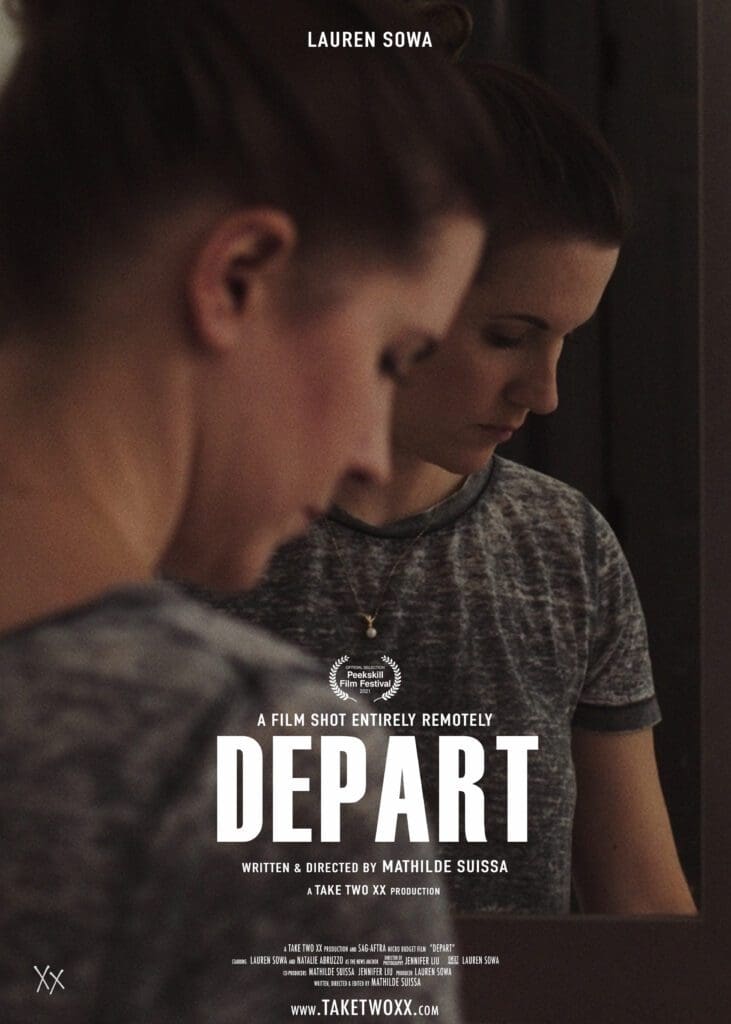
Depart tells a story in the near future, where there are sudden evacuations that sections of the population must be ready for at any moment. During her group’s departure, Lauren must rush against time to make her departure or risk being left behind. A film shot entirely remotely during the height of the pandemic in New York City, Depart ultimately examines grief during a time of futuristic uncertainty. The Covid-19 pandemic, something we continue to face, has left artists, performers, filmmakers displaced from the work and jobs we love. To create in a world where everything was frightening and uncertain, where we could not work together safely. Jennifer Liu (Director of Photography), Lauren Sowa (Actor and Producer) and I (Mathilde Suissa, Writer/Director) set out to make a film 100% remotely and safely, in a quarantine experiment.
The pandemic largely influenced this story, but I wanted it to resonate with an unknown and still remain a relatable societal issue. How we grapple and aim to tackle closure with such a global event remains an unknown process for most people, but with this film, I hope to connect to others going through loss and grieving during an unstable and uncertain time in the world. Over the course of a week in October of 2020, and previous weeks of logistical planning and pre-production, our 3 person all-female team crafted a story about loss, grief and societal unpredictability during a time in our lives that mirrored these themes – and shot it entirely virtually. Jennifer and I made out a plan to extensively prep and map out the production since they would not physically be present on set. Lead actor and producer Lauren Sowa took on the task of shooting the film remotely in her home in the Bronx, NY with the Blackmagic Pocket Cinema Camera 6k, paired with Canon lenses with a tech integration that allowed for Mathilde and Jennifer to be “present” on set and connected to the camera.
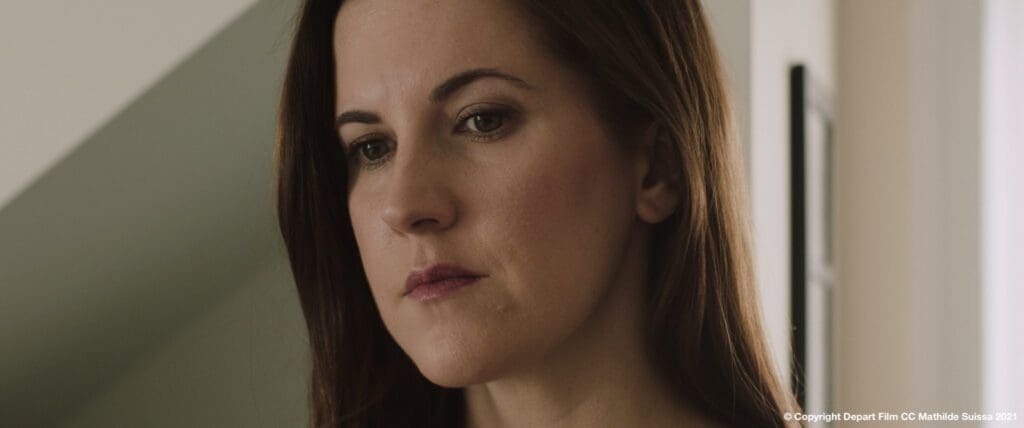
Here’s how we did it. From the start, I knew that the script would have to be written around many restrictions. One actor, no on-set crew, one location, and realistic expectations with one person behind the scenes. With those guidelines in mind, the story actually came quite quickly to me. The pandemic largely influenced this story, but I wanted it to resonate with an unknown and still remain a relatable societal issue. Global warming and an uncertain future remains a foremost issue, coupled with the pandemic, anxiety and isolation were at an all-time high. I channelled these themes in the script, but ultimately, at its core, Depart examines grief and loss during a time of instability, like so many still continue to face right now. With this story in mind, it enabled our team to craft the narrative while staying virtual. The script was broken down and turned into a lined and shooting script. A blueprint of Lauren’s home was made and used to make precise overheads for mapping out each scene and shot. Lauren’s blocking, camera placement and lighting schemes were detailed in the overheads. This enabled Lauren to easily place the camera/tripod and lights in her home, like using a virtual map. Using the blueprint, Mathilde drew out storyboards specifically drawn to Lauren’s home, which gave Lauren a clear frame for what each shot would look like, along with information about which lens would be used for each frame.
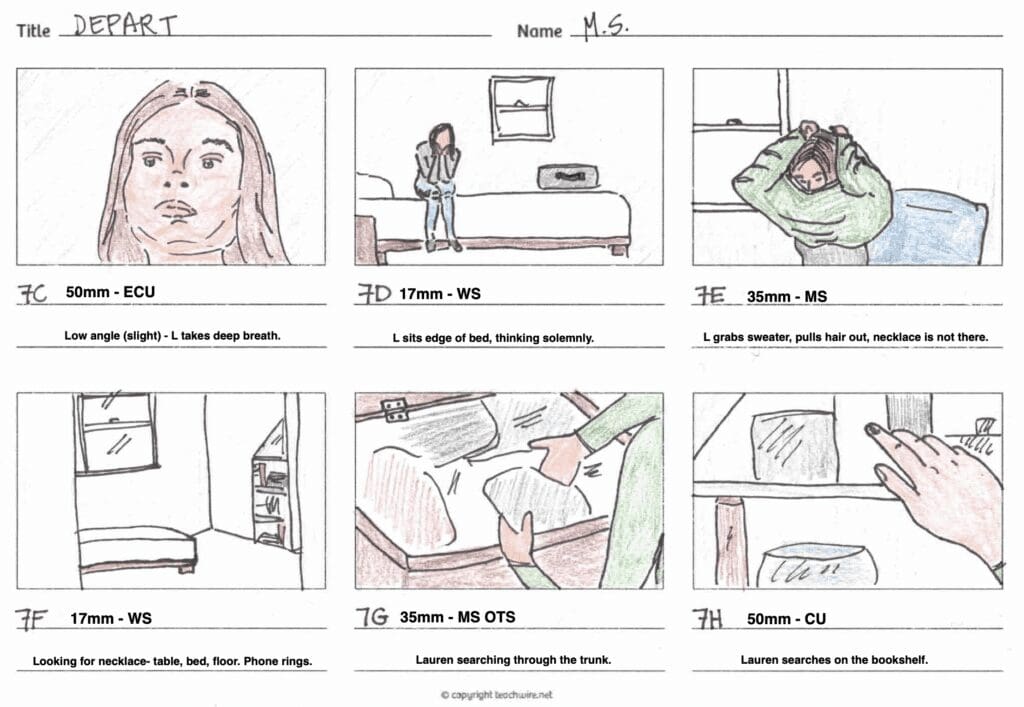
Shooting schedules were made like any other shoot, grouping locations together and simplifying set-ups based on camera placement and focal length. Knowing we could only have a static camera, Jen and I created a vision and shot list that would reflect solitude, loneliness, emptiness through still shots enclosed within door frames, long single takes and wide angles, juxtaposed with hectic and anxiety-inducing close-ups and ECUs. Jennifer + I and Lauren both own the same camera, the Blackmagic Pocket Cinema Camera 6K, which enabled seamless tech support and camera instruction from DP Jennifer to Lauren. The camera rig was built with Jennifer and Lauren via Microsoft Teams a week before the shoot, which allowed for lessons and troubleshooting. Prep also called for multiple camera tests prior to the shoot, so clear framing and lens choice could be established, but also allowed for difficult scenes to be rehearsed and blocked prior to the shoot so Lauren could focus on her character and performance. Lauren and I planned all of her wardrobe and the production design just like a normal shoot, making breakdowns and costume sheets with each item and scene. I have been a professional Production Designer for many years, so I was able to communicate with Lauren which areas needed to be set dressed beforehand and created the key props. Two crucial components: 4K Capture Card + Microsoft Teams. The purpose of a capture card is to take a video feed from one device and transmit it through an HDMI cable to another device so that it can be encoded for playback or streaming. In our case, using a 4k video capture card gave us the ability to turn our laptops into video village, integrating the camera feed and allowing all of us to see video and playback on our own computer screens remotely.
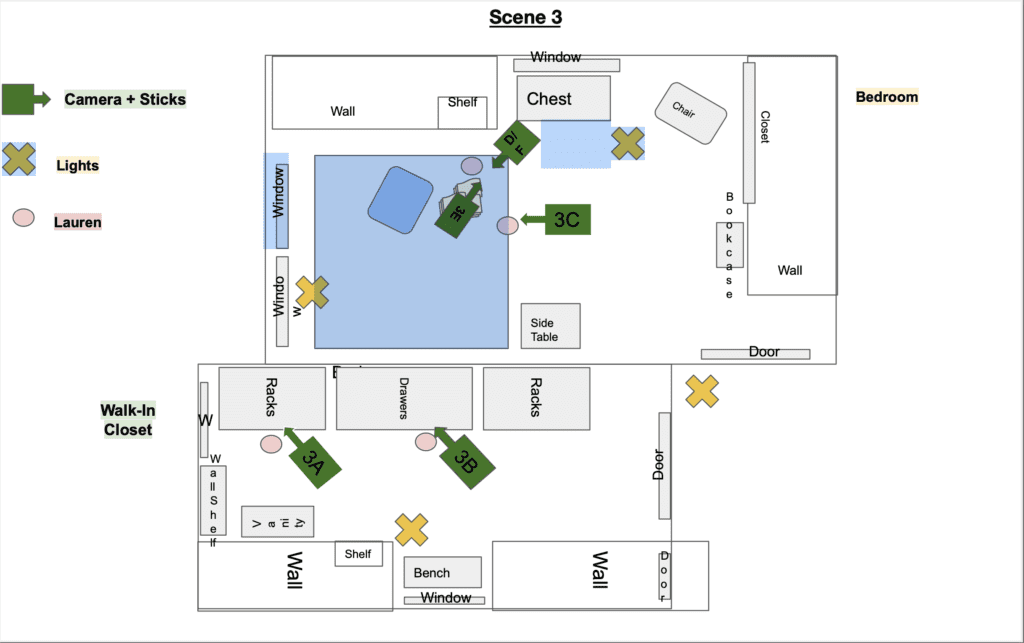
Microsoft Teams is a digital workspace that has video conferencing, file storage, and application integration combined. Using Microsoft Teams for the shoot allowed for seamless communication (both chat and video), file sharing and 4k video capture integration. Lauren would connect the BMPCC 6k camera to the capture card, which was plugged into her laptop while using Microsoft Teams as our video calling software. While in Teams, changing the video input settings to the BMPCC 6k instead of the laptop camera gave us access to the camera’s screen for video feed and playback for the entirety of the shoot. Each shoot day was planned with a production schedule, shot list and overhead diagrams, but with such a unique production and only one person physically on the set, we took it one day at a time. Lauren had the most difficult role, having to slate, run sound and her lav, prepare props, adjust lights, but the extensive tech preparation allowed for her to focus on her performance and character. After slating, Lauren would take a few moments to herself, and walk on in character. We had ample breaks throughout the day for Lauren to adequately rest and discuss character notes. Screenshots were taken by Jennifer and I in Teams for each scene for continuity and reference.
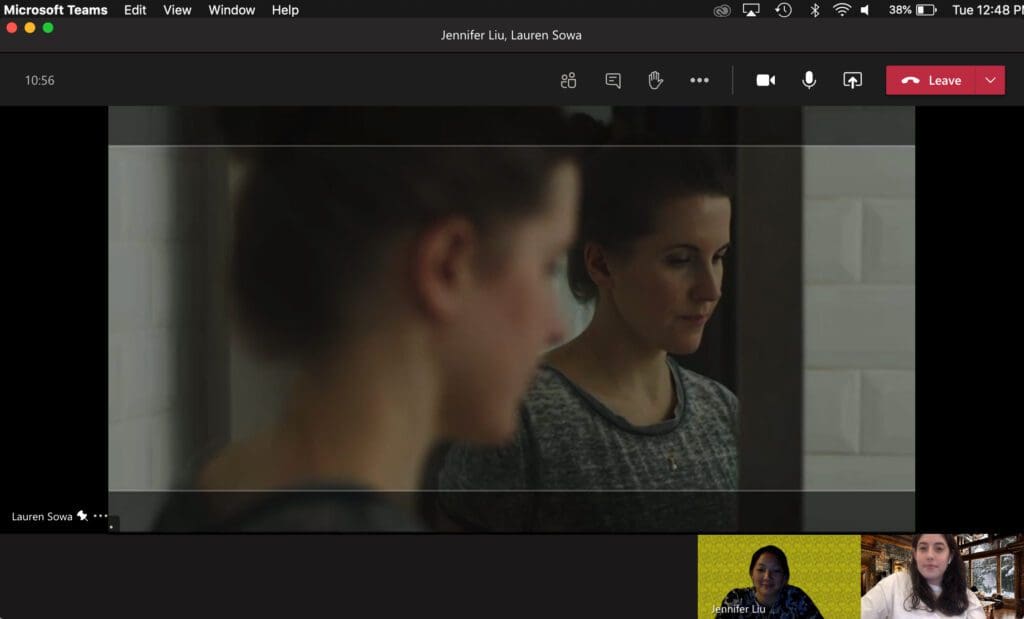
We averaged around 10 shots per day, which encompassed a total of 5 days to wrap the film. Lauren’s skill as a professional photographer with knowledge of cameras and lights made this ambitious venture possible. The pivotal role of the news anchor ties the film together in a powerful way, Lauren and I knew casting the right actor would be crucial. After receiving many talented auditions from voice actors, Natalie Abruzzo stood out as the clear choice and she was cast immediately. Natalie is an on-air journalist and host, therefore her ability was natural. After a few sessions with my direction, Natalie recorded her voice-over at her home booth and sent the audio to me, which was mixed in DaVinci Resolve. How we grapple and aim to tackle closure with such a global event remains an unknown process for most people, but with this film, I hope to connect to others going through loss and grieving during an unstable and uncertain time in the world. The process of how we made this film shows that despite distance, human connection perseveres.
Depart will have its North American premiere at the Peekskill Film Festival, screening at the historic Paramount Theater, on August 20th.
Website: www.taketwoxx.com/work/depart
Trailer: https://vimeo.com/546730473/a06160453c
Want your film project featured on Local Films? Fill out this form!
